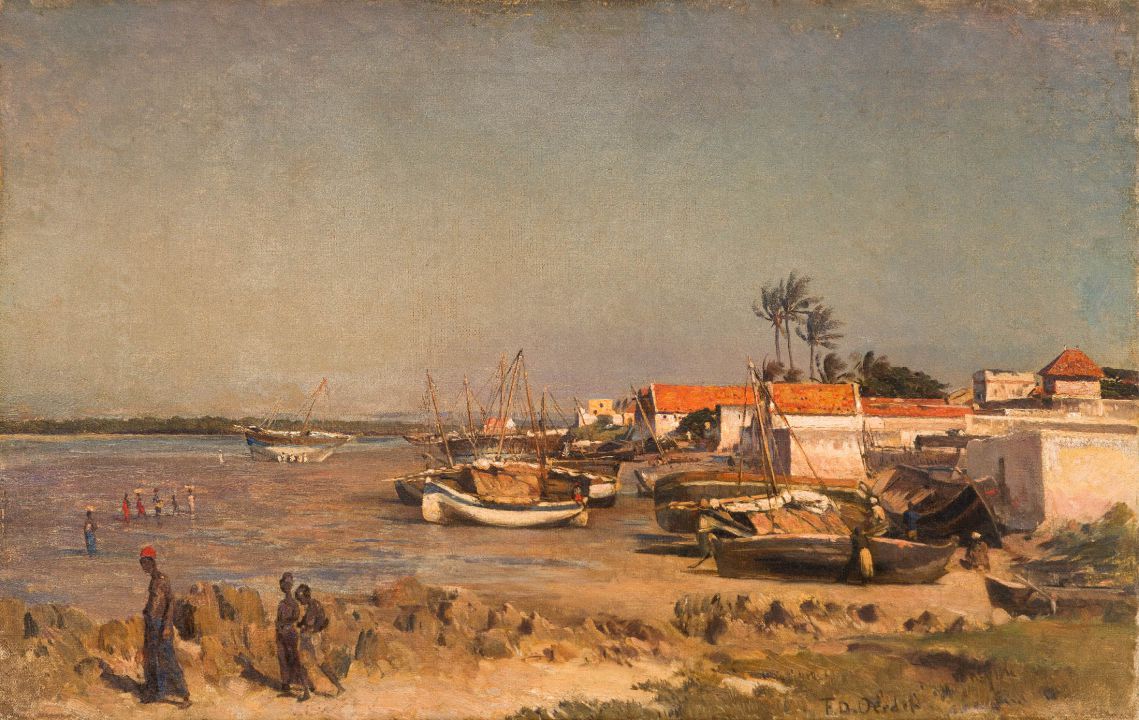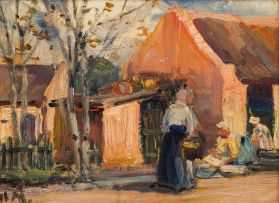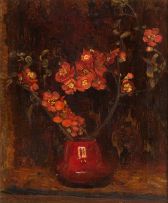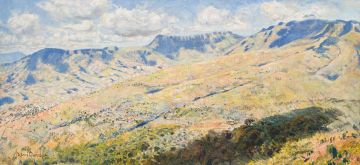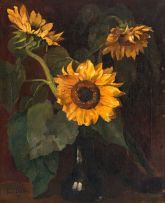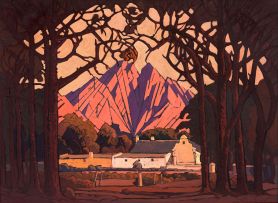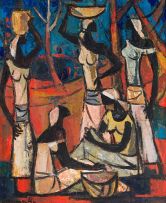Important South African and International Art
Live Auction, 5 June 2017
Evening Sale
Incl. Buyer's Premium & VAT
About this Item
signed
Notes
Frans Oerder, who trained at the Rotterdam Academy in the school's typically conservative mode, settled in Pretoria in 1890, later sharing a studio with Anton van Wouw. After becoming a burger of the Zuid-Afrikaansche Republiek in 1896, and at the request of President Paul Kruger, he joined the Boer forces in 1899 as an official war artist to make sketches and paintings in the field. During his internment as a prisoner of war at Meintjeskop, and thanks to his quickly-noted talent, Oerder made a number of portraits and drawings for his captors too in return for certain privileges. After his release, the artist travelled up the East Coast of Africa in 1903 and made numerous intoxicating paintings there of makeshift wharfs, semi-cleared mangrove forests, rickety, beachfront lean-tos, and barefoot, turbaned figures in the sun. While most surviving examples from this expedition are small-scale, exotic vignettes, the present lot must have received the artist's complete attention: it is particularly large, fully realised and meticulously executed. Oerder took great care to show the salt-encrusted plastered walls facing the sea, the hardy, bleached-apricot rooftops, and the slack-shouldered, slow moving figures on the shore. Moreover, he managed to evoke an amazing sense of the seaside weather: the air is still in the smaller coves where hulls rest in the sand and coconut-husk cords hangs limply, while the Indian Ocean breeze bends the high palm trees over the town and rustles through their fronds.
Oerder might be better known for his exquisite still life paintings of delicate flowers and glazed ceramics on polished surfaces, but a picture like the present lot suggests that he also belongs to the same dazzling topographical tradition in Africa as do Thomas Baines, Thomas Bowler, George French Angas, Frederick I'Ons and Hugo Naudé.
Provenance
Purchased at the old Pretoria Club, in 1994 by Hans van Schaik.
